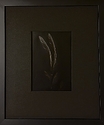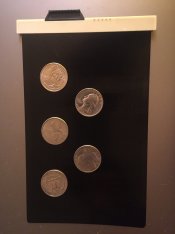Here's what I'd do for "down-and-dirty" Zone-System testing.
Film Speed Determination: Rate the film 2/3 stop less than box speed for the initial tests. That will get you close enough to get started, you can adjust later.
There, that takes care of the film-speed testing. If you find later that you have an excess of shadow detail, you can always rater your film faster. Or slower if you need more detail there. Adjust in 1/3-stop increments till you get what you need.
Development time for "N" test: I use two methods (see below for Zone Rulers). The easiest is to simply find a scene with a full range of tones from Zone III detailed shadows through Zone VIII detailed whites as well as specular reflections or a light source in the scene for "blank paper white" and make a couple negatives (maybe three if you don't have a starting point for developing at all). Then, develop one at your best guess for N. If your using a completely new film/developer combination, start with 15% less developing time than the manufacturer recommends.
Develop a negative and proper proof it, i.e, a print at the minimum exposure time to get maximum black from your film rebate (you'll have to do a test strip to find this time; evaluate the strip dry and under regular, not-too-bright, lighting). If you plan on enlarging, do this step with an enlargement to take enlarger flare, etc. into account. If you plan on contact printing, make a contact print. Use the paper you plan on using mostly and use a middle contrast setting. I recommend 2.5 or even 3.
After you've found your proper-proofing time and made a print, first check Zone III. If it looks pretty good, i.e., dark with some texture still, and you have max. black for the film rebate, your proper-proofing time is good. If not, you may have misjudged your proper-proofing time (it's trickier than it looks till you get the hang of it), so go back and make the same print at an enlarging exposure time that renders Zone III how you want it.
Now, looking at your prints, evaluate Zone VIII and the specular reflection/light source. If Zone VIII has a bit of texture and the specular highlights are blank paper white, you're good to go. If not, you need to adjust your development time to get them there. If the whites are too gray, then increase development time 15% for the next negative. If Zone VIII is blocked (blank white) and there's no difference between it and the specular highlights, reduce development time 15% for the next negative. If there's a slight difference between Zone VIII and the specular highlight, but there is no detail in Zone VIII, just reduce 10% for the next neg.
Develop the next negative and repeat till you have it right. You should be close enough to make excellent prints from your negatives on test two; test three if you're really way off to start with.
You can extrapolate intermediate results to end up with a final developing time that's close. Err on the side of overexposure and underdevelopment. Then go out and make images, keep notes and adjust both personal E.I. and development time as needed.
N+ and N- Developing Times: You can forget expansions and contractions altogether and just rely on contrast controls in the darkroom. Many do this. I prefer a hybrid approach. I develop no more than N+1, relying on other contrast controls if I need more than this. For contractions, I only use N-1, relying on SLIMT and other contrast controls if needed. SLIMTs are another whole thread's worth, so I won't get into them here. I'd recommend finding N+1 and N-1 times and then relying on your VC paper for greater or lesser contrast when needed (e.g., if you need N+3, develop N+1 and print using a #4 or #5 filter, etc.).
You can always do the above development-time test for expansions and contractions; find a scene, make a few negatives, develop, proof and evaluate. However, if you don't want to bother right away, just go out and shoot. When you come across a scene that requires an expansion or contraction, make two or three negatives to do the development-time test with. For N+1, start with 20% more developing time than N. For N-1 start with 20% less time. Develop your first negative, proof, evaluate and tweak development time for the next. In a few tests, you'll be well in the ballpark. Any misses should be well within the flexibility of VC paper to still print well.
Keep notes and adjust when needed (have I said this before?).
I also have a method of making a full Zone-Ruler development test on two sheets of 4x5 film, which I'll attach. Still, if I can find a scene that has the tones I need, I prefer that method now, since it takes everything into account, from your meter and metering techniques through your printing paper, and is faster.
Best,
Doremus












 I really wish I had bookmarked the thread. It was sometime last spring.
I really wish I had bookmarked the thread. It was sometime last spring.